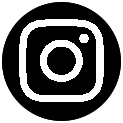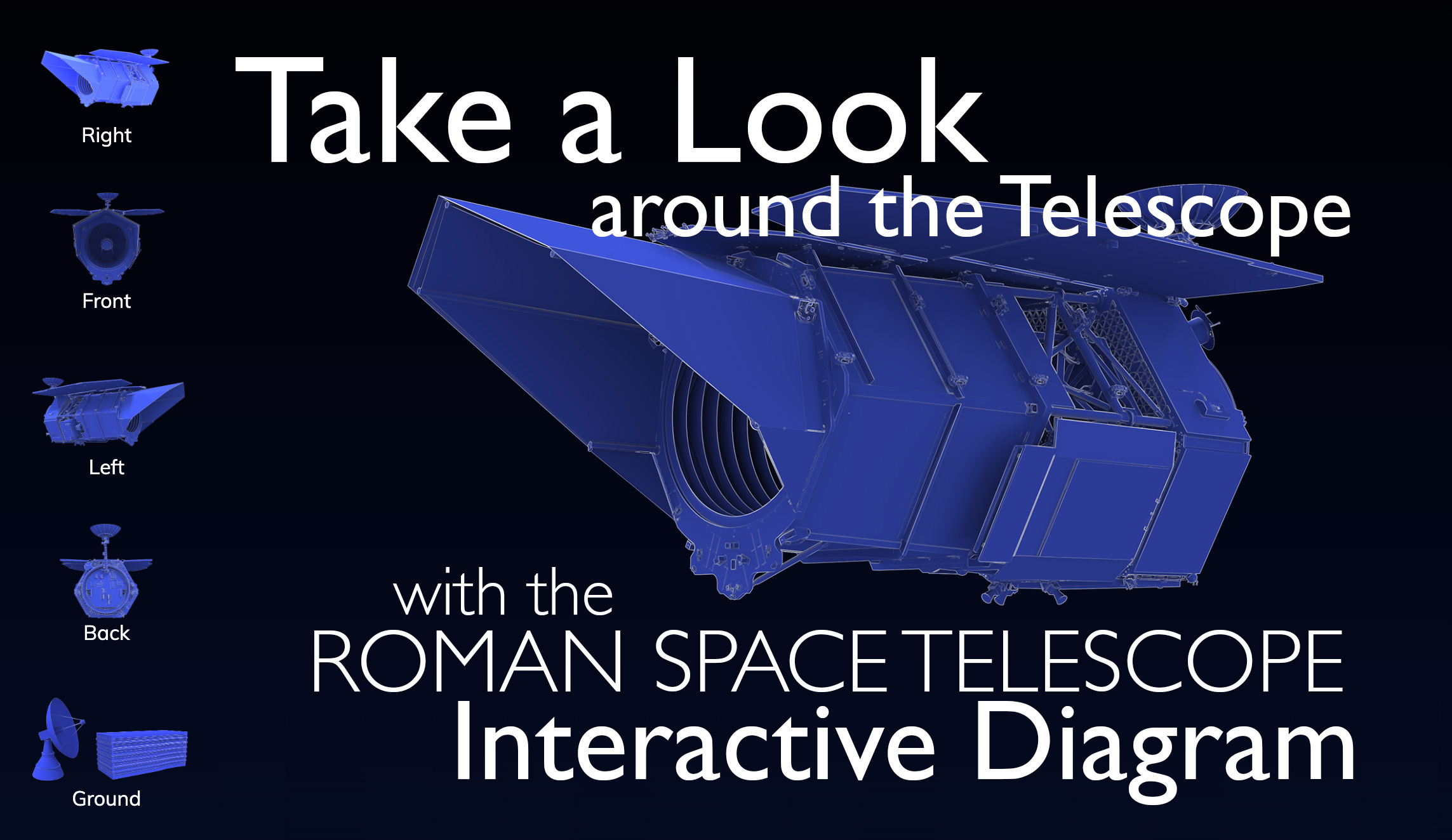Roman Core Community Survey White Papers
The Roman CCS science white papers were due June 16, 2023. This page provides a record of the intent and expected use of the white papers.
The primary goal of the Nancy Grace Roman Space Telescope is to maximize the scientific return from wide field near-infrared surveys. To this end, the Roman Space Telescope team has requested initial community input to be used to begin the community-led work of defining the observational strategies for Roman’s Core Community Surveys.
As one avenue for providing input, the Roman Mission is requesting white papers, due on June 16, 2023, describing science investigations that could be enabled by one of the Roman Core Community Surveys (CCSs). The aim of the Roman CCS white papers is to compile descriptions of Core Community Survey science drivers and quantify the observational strategies that will enable and optimize a given science investigation.
The committees charged with defining Roman’s Core Community Surveys will be formed in mid-2023, and will be composed of community members who collectively reflect the range of astrophysics the community wants to see enabled by the Core Community Surveys. The Roman CCS white papers will be provided as input to the Core Community Survey definition committees (referred to as the “community survey committees” hereafter), enabling them to explore the impact of various trades in observational strategy on a Core Community Survey’s overall science return, and to identify areas where significant additional discussion with the community is needed. The white papers will provide the Roman Mission, the community survey committees, and the astronomical community with a detailed understanding of the observational strategy space over which trades will need to be considered and consensus built.
Accordingly, Roman CCS white papers should include discussion of each of the following four elements: (1) the importance of the science investigation with respect to addressing open questions in its field, (2) how the capabilities of a Roman Core Community Survey will uniquely enable the investigation, (3) the minimal and optimal observational strategies for enabling the science investigation, within the bounds imposed on the relevant Core Community Survey by its science requirements in cosmology or exoplanet demographics, and (4) the impact of different observational strategy choices on the science investigation, expressed via appropriate metrics or figures of merit that the community survey committees can readily utilize. White papers discussing science investigations in any area of astrophysics, including cosmology and exoplanets, are encouraged, regardless of which Core Community Survey will enable them.
This white paper call is the second stage of the Roman team’s request for initial community input. The first stage was the submission of short, one to two paragraph descriptions, or ‘pitches,’ describing science investigations that could be enabled by one of the Roman Core Community Surveys, combined with a questionnaire to obtain high-level input on the importance of various observational strategy choices for the success of the science investigation described in the pitch. The submitted science pitches can be viewed.
The Roman Mission team will be hosting a series of virtual question and answer sessions aimed at facilitating community collaboration and removing barriers to writing white papers. Details will be posted on the main Call for Community Input page.
What will make a white paper useful?
The purpose of this Roman CCS white paper call, and the way in which these white papers will be used, differ substantially from a standard white paper call, which often takes the form of a brief, informal proposal advocating for a specific potential future observational program or capability. We give below some additional guidance for crafting maximally impactful and useful white papers for the purpose of influencing the design of the Roman Core Community Surveys. The exact nature of the submitted white papers will vary based on the science case and Core Community Survey under discussion. However, there will be common elements that will maximize the usefulness of the white papers. The most effective white papers will:
- Consider the broader scientific landscape and the Roman science requirements: The primary requirement driving the definition of Roman’s Core Community Surveys is to maximize the science performed with Roman’s infrared surveys. Also important in determining the design of the surveys is the consideration that they must provide observations that will fulfill Roman’s requirements in cosmology and exoplanet demographics. Advocating for observational strategies (e.g., filters, cadence, locations) that can be accomplished within a survey of broad utility and which will enable or enhance a specific science case will provide the most compelling Core Community Survey options. As a concrete example, of the science pitch respondents who answered the optional portion of the questionnaire, one-third said contiguous survey area was important to achieving their science goal. Thus, a survey strategy that requires many disparate pointings to obtain a census of specific objects of interest would likely preclude a large number of science investigations the community wants to pursue. However, some interesting number of these objects may be able to be observed within the final chosen survey area, in which case it will be advantageous for the committee to know what strategies (e.g., filter and exposure specifications) will enable investigations of the objects of interest.
- Provide compelling arguments for including the science case within the Core Community Survey framework: It is easily foreseeable that regardless of the details of the final definition of each Core Community Surveys, there will be multiple compelling science cases that can be achieved by obtaining additional Roman data. Competitively selected General Astrophysics Surveys will provide a mechanism for extending the scientific reach of the Core Community Surveys through targeted observations. Moreover, constraints on the time available for the Core Community Surveys will inevitably require difficult choices to be made. The community survey committees will have to weigh whether the observations that would enable some science cases might be more appropriate for the future PI-driven, General Investigator proposal calls. Therefore, white papers may want to specifically address the benefits to the science investigation, and/or the science community, that would result from obtaining the needed observations as part of the Core Community Survey itself.
- Illustrate scientific feasibility: During its first five years, Roman’s observing program will include the three Core Community Surveys, competitively selected PI-led General Astrophysics Surveys (nominally 25% of the available time), and the CGI technology demonstration observations. This places constraints on the time available to devote to each Core Community Survey. White papers with science investigations requiring particularly ambitious observational strategies (e.g., deep observations in a large number of filters, or over a very large area, compared to existing example Core Community Surveys) will be most impactful if they can illustrate, at a high level, that the needed suite of observations can likely be obtained within the approximate time which will be available for a single Core Community Survey. Similarly, white papers describing science cases focused on extremely rare objects will be most impactful if they can demonstrate that a scientifically interesting number of objects can be expected within a survey volume that is reachable given the approximate time available for a single Core Community Survey.
- Speak to a broad range of expertise: The science pitches submitted in February 2023 covered a tremendously wide range of astrophysics for all three surveys, from solar system science to large scale structure and everything in between. The community survey committees will be formed to reflect the range in topics represented in the science pitches for each of the three surveys. Therefore, anticipate that most of the committee members reading your white paper will not be experts in your field.
- Be clear and concise: While there is no page limit, we suggest a target of 2 to 3 pages of text, with additional pages of figures, tables, or references, as needed. The white papers will be critically important in setting the direction of the work of the community survey committees, and in providing easily referenced material for committee members from which they can begin to build a survey. However, the white papers will not be the only avenue to provide input to the community survey committees. There will be additional opportunities for the community to interact with the community survey committees and to participate in on-going discussions during the survey definition process.
In addition to the above considerations, the below list provides prompts to be used as examples for guiding responses to the four main elements requested in the Roman CCS white papers.
- Why should this science investigation be considered a driving science case in determining the observational strategy of the Core Community Survey?
- Discuss all observational survey parameters that are important for the success of this science investigation. How will the success of the science investigation scale with different choices in survey parameters? Examples of parameter space that may be important to discuss could include, but are not limited to:
- Field of view and regard (e.g., total survey area, number of fields, location of fields)
- Filter or spectral coverage
- Cadence of observations (e.g., number of epochs, cadence of epochs, total time baseline)
- Depth of observations (e.g., total depth, depth per epoch)
- For which combinations of survey parameters is there meaningful trade space for enabling this science investigation? Discuss the boundaries of the observational parameter space within which trades can be made without significantly impacting the success of the science investigation. For example, could the science investigation be done with either a large field of view and shallower data, or a smaller field of view but deeper data?
- For which observational survey parameters is there only a minimal requirement? For example, the science investigation must have two filters, but the choice of filters will not impact the success of the science investigation.
Submission
Roman CCS white papers should be submitted here as PDF files by June 16, 2023. Please include a cover page listing the title of the white paper, the name of the Core Community Survey under discussion, the name, affiliation and contact information of the submitting author, a list of contributing authors with affiliation and contact information, the relevant scientific category or categories from the below list, and any additional scientific keywords. A Word template is provided here for convenience and as an example of what to provide in the cover page, but is not required to be used.
Scientific Categories: solar system astronomy; exoplanets and exoplanet formation; stellar physics and stellar types; stellar populations and the interstellar medium; galaxies; the intergalactic medium and the circumgalactic medium, supermassive black holes and active galaxies; large scale structure of the universe
For specific questions related to a submission, email both mailto:help@stsci.edu and roman-help@ipac.caltech.edu, with subject line: “Roman CCS community input.”
Resources
Frequently Asked Questions
Should I provide a complete survey description that will best meet the needs of my science case?
This white paper call is intended to provide the committees tasked with defining the surveys a quantitative starting point for crafting a survey that will maximize the science the community can do with that survey. To that end, collecting a large number of unique survey descriptions that each support one to a few science cases is not particularly helpful. Rather, the committee needs to understand the range of observational strategies that will enable a given science case (e.g., the science can be achieved with imaging in 3 filters, as long as the set of 3 filters is one from a provided list), and the impact of trades in observation strategy on a given science case (e.g., reducing the area by X% will decrease the number of objects of interest by Y%; an area less than Z% will yield too few objects of interest to place any meaningful constraints on their demographics). This information will enable the committees to identify observational strategies for each Core Community Survey that will enable the broadest range of compelling science cases possible.
You ask for metrics or figures of merit, but my science case doesn’t have, or doesn’t lend itself to, easily quantifiable metrics or figures of merit. What should I do?
We acknowledge that not all compelling science cases lend themselves to easily quantifiable metrics or figures of merit. Note that metrics do not have to be complicated to be useful in this context. For example, including something as simple as ‘we expect the number of objects of interest to scale approximately linearly with the survey area’ still gives the committee a concrete understanding of the impact of reducing or increasing the survey area on your science case.
Is there somewhere I can go to find out if there are other astronomers interested in similar science cases as I am?
Over 100 science pitches were submitted in February 2023. These pitches describe science that could be enabled by the Roman Core Community Surveys ranging from solar system investigations to large scale structure. The list of science pitches and the submitting authors is a good place to identify colleagues interested in pursuing similar science investigations with Roman’s Core Community Surveys. In addition, future community workshops, to be held after formation of the community survey committees, will be aimed at fostering collaboration and discussion.
Where can I find the survey definitions so that I can assess whether my science case would require any modifications to the surveys?
Roman’s Core Community Surveys have not been defined. Previous work by the former Roman Science Investigation Teams was instrumental in showing that Roman could meet its requirements related to cosmology and exoplanet demographics. Example High Latitude Wide Area, High Latitude Time Domain, and Galactic Bulge Time Domain surveys crafted by the Science Investigation Teams provide demonstrations of the scientific potential of Roman’s Core Community Surveys, as well as examples of concrete survey strategies that meet the cosmology and exoplanet demographic requirements. You are welcome to use these example surveys to determine if, and how well, they would meet the requirements for your science investigation. However, the community survey committees will be tasked with approaching the definition of Roman’s Core Community Surveys with a fresh set of eyes, and charged with incorporating the current input of the community in equal measure with the lessons learned from previous discussions and investigations into survey strategy in order to maximize the science Roman’s Core Community Surveys will enable. The implemented Core Community Surveys could be significantly different from the existing example surveys. Therefore, if existing example surveys will enable your science, it is still essential to describe which aspects of the observational strategy are important for enabling your science investigation, and what modifications to the strategy would be acceptable.











